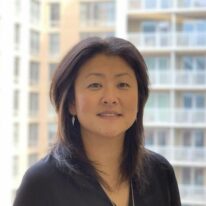Debbie Njai: Breaking Down Barriers for People of Color in the Outdoors
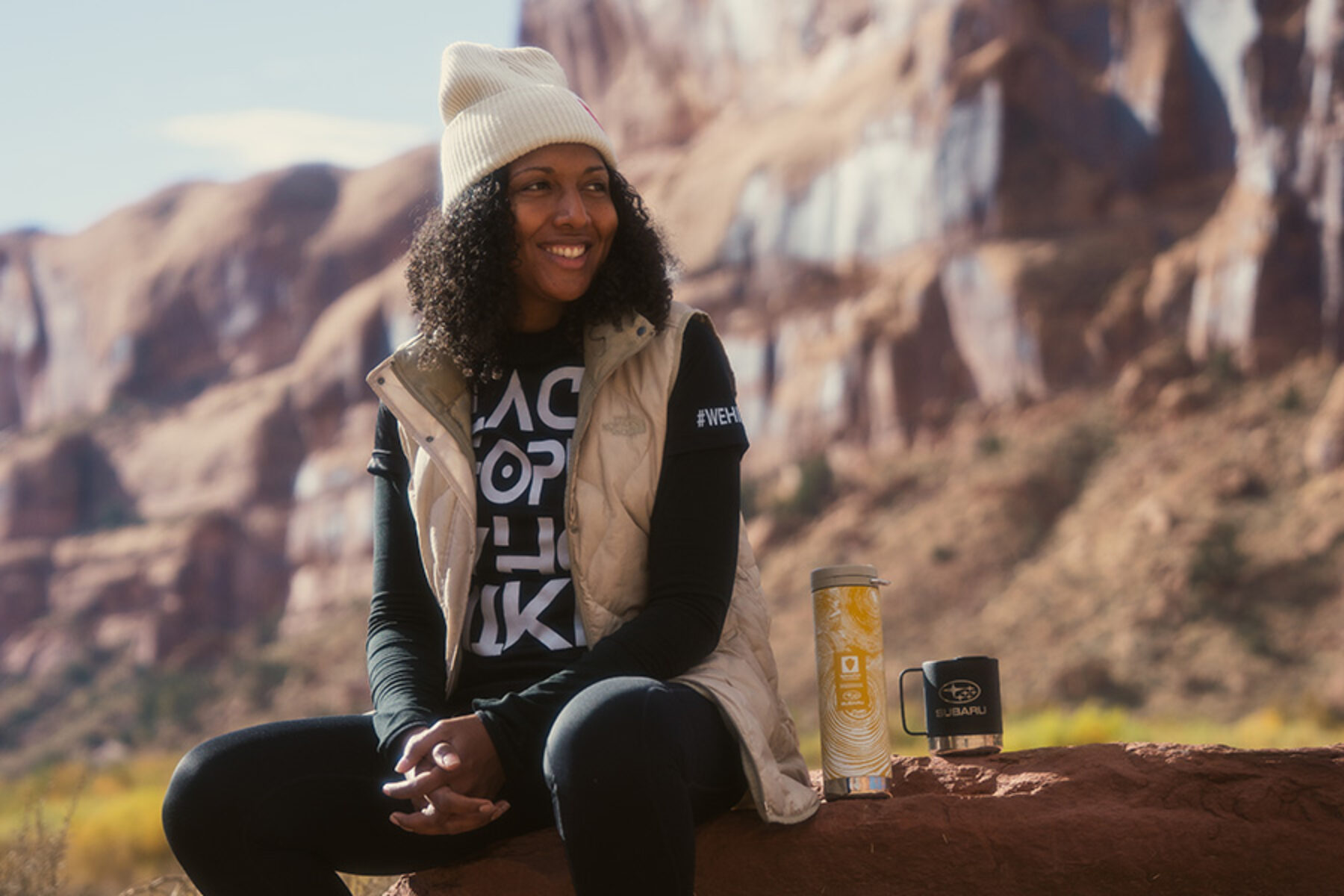
When Black People Who Hike founder Debbie Njai went on a short hike with friends in 2020, she didn’t know the 1.7-mile trek would change her life—or that she’d help transform life for thousands of people in just four years. Today, Black People Who Hike engages more than 50,000 people with a mission to connect People of Color to hiking and nature and combat the historical barriers that keep Black people from getting outside.
“I attribute the beautiful person I am today to the outdoors. And I’ve seen the exact same thing for person after person who joins us.”
—Debbie Njai, Founder, Black People Who Hike
Recently, Rails to Trails sat down with Njai to learn about the inspiration for her work—the importance of representation in the outdoors, and the impact her St. Louis-based organization is having in Missouri and around the country.
How did you get into hiking? What inspired you?
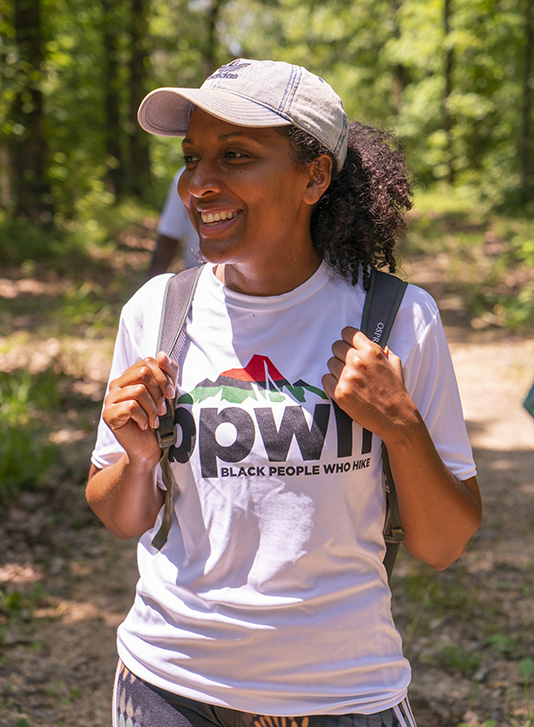
I started hiking in September of 2019. At the time, I was going through a lot personally—stress, anxiety and battling seasonal depression. Hiking was always something I had wanted to get into, but I didn’t know how to get started. And then I was invited out with a childhood friend.
We had gotten a new puppy, and my family commissioned [my friend] to build a fence. I brought up hiking one day, and a few days later, he and his wife invited me out. We took my puppy Brownie and their puppy, and we hit the trail out here in Missouri. It was a short trail—only about 1.7 miles—in Castlewood State Park. But it was so beautiful, so therapeutic, and it was something I just fell in love with. I was like, “Hey, can we go again next Sunday?”
What induced you to found Black People Who Hike?
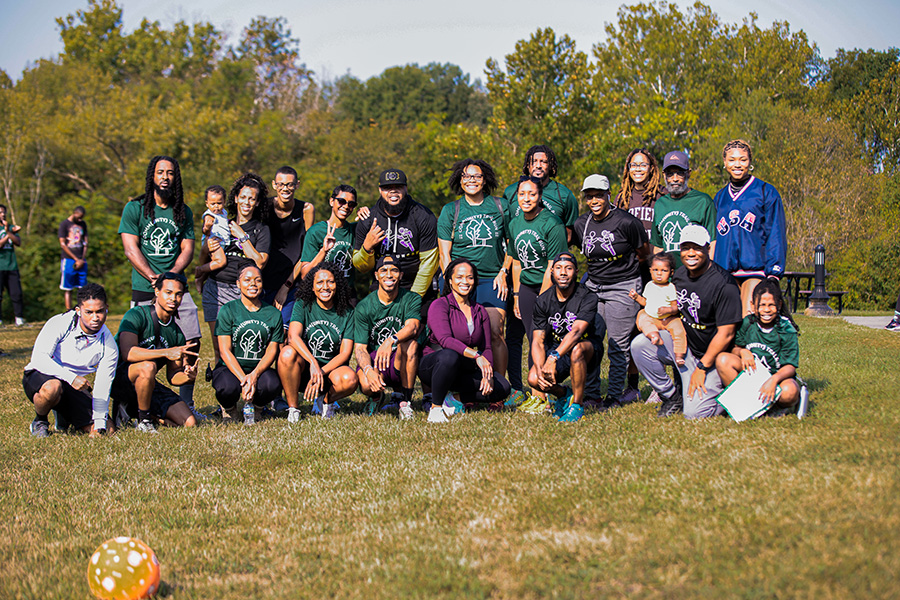
Every week I started going out, and I got my brother to go along, and I was … inviting friends, and I had a couple people here or there join me. But for the most part, there was this reluctance from people that looked like me to want to engage in this activity. It was something they’d never done. They didn’t think that this was a thing that Black people did.
For me it was … so life changing that I wanted everyone to experience it. And that’s really how Black People Who Hike came to be.
It was this statement: I am Black, and I am this person who hikes.
I started an Instagram page (@blackpeoplewhohike) and posted photos with inspirational quotes, and people started reaching out, wanting to join me. Every week for the next 40 or 50 weeks we hit the trails, and more and more people would come out—and we just essentially started a movement, which we called the #wehiketoo movement—to get Black people active and outside in nature.
Learn more about Black People Who Hike at blackpeoplewhohike.com or Instagram @blackpeoplewhohike.
Were there any challenges?
It happened so organically. I honestly believe with Black People Who Hike that it’s me walking in with the gift God gave me—walking in with my purpose. Everything just flowed.
“It starts with where you’re at. Some people think that to hike, they have to drive several hours … hike up a mountain. But you can literally just grab a local trail in your community and walk.”
—Debbie Njai, Founder, Black People Who Hike
Tell me about your work with the national parks.
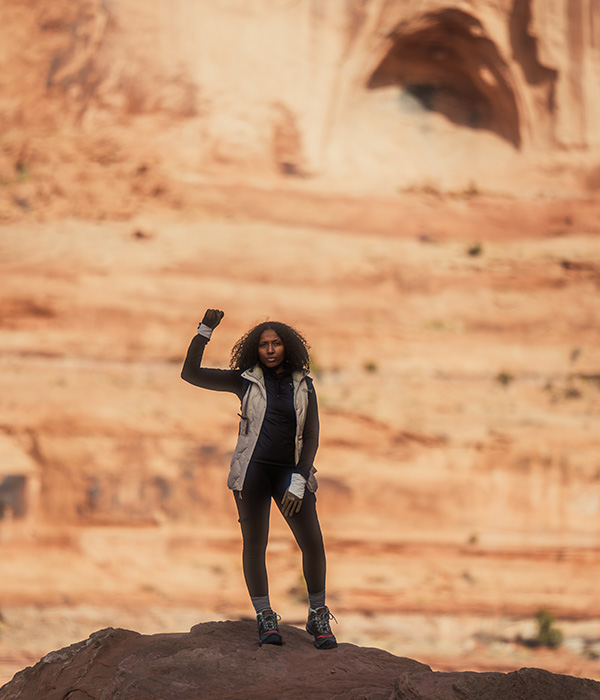
In 2021, I had stumbled across a [ParksVenture grant opportunity] with the National Parks Foundation focused on increasing representation of People of Color in national parks. The data at the time showed that less than 2% of national parks visitors are People of Color, and they’re working on removing barriers. When I read it, I thought this aligned so perfectly with our organization.
So we applied to the grant and pitched a national park tour. I always had this vision of us going on tour across the country. We received six $20,000 grants … and we had the opportunity to go to six different national parks and bring along our community in 2022.
You’ve spoken of the recognized barriers for Black people to the outdoors—that many Black people do not always feel welcome in the outdoor space. How are you trying to combat this?
I think there are a lot of barriers that People of Color have faced in terms of the outdoors and still continue to face. Black People Who Hike is working to break down those barriers. Some of them are [related to] what I call “Historical Exclusion.” For instance, we talk about the national parks tour … Black People weren’t equally allowed into the national parks until desegregation in the 1950s. And then … was it a safe space for us?
My parents were born in the 1950s. Did their parents have the opportunity to visit national parks growing up? No. People born in the 1950s—did they have the opportunity? Maybe, maybe not. Maybe they introduced their children to it, and maybe they didn’t.
There’s this lack of generational health. Rather than us being passed down this generational health, it’s this generational fear of visiting these areas.
We’re creating a safe, welcoming space where people can show up with a community. And when we go to different trails, we try to learn some of the history—anything that can tie us to that land and give our community a deeper sense of belonging.
How else are you breaking down barriers?

Representation. When I was reaching out to people, they’re like, “Hey, Black People don’t do this. I don’t want to hike.” Because they haven’t seen it, right? They haven’t seen themselves portrayed in these activities. So, when I started hiking, I took a whole bunch of photos. I felt like I had an obligation to document [our activities and share them]. And the photos are what resonated with my community. Black People Who Hike is very focused on imagery in the space because it does encourage more people to join us.
We are very heavily focused on content and putting out positive Black joy content in the media space because it changes the narrative; it reaches more people, and it encourages more people to join us.
People often talk about trails and the outdoors as being transformative. How have they transformed you, and how have you seen them be transformative to others?

Prior to me hiking, I was in this space of, “What am I doing with my life?” Hiking and the outdoors allowed me to find myself and unapologetically be myself.
I was literally watching myself transform into this beautiful person—from stressed out and suffering from anxiety and seasonal depression … to smiling and glowing and hiking through the winters with 20- and 30-degree weather with a smile on my face. I attribute the beautiful person I am today to the outdoors. And I’ve seen the exact same thing for person after person who joins us.
I stumbled across forest bathing—scientifically it helps with anxiety, stroke, depression, heart disease, diabetes—all these things that are super prevalent within our community. And it’s free. You can come out here and feel good, and it’s a free resource for us.
I love to tell this story because it was literally one of those pivotal moments where I realized: This is huge. This is larger than me. This is something the community really needs.
It was February. It was a self-love hike around Valentine’s Day, and it was very, very cold. We had like 45 or 50 people; at the time, it was one of the largest hikes we’d had. It was in 2020, before COVID, and people had to go around in a circle and say their name and something they loved about themselves. A there’s this one individual, and she was smiling like the happiest person ever, and you would never have known what she was going through. She reached out to me afterwards; she wanted to meet me in person and let me know just how heartfelt that experience was for her.
She had moved to Saint Louis in the years prior. She didn’t have a community. She hated being here. She was chronically depressed. She was on a whole bunch of medication. She was at times suicidal.
Her friend was really trying to help her and said, “What is it that you need?”
She said, “I want the ocean.”
Her friend said, “We don’t have the ocean. What else is it that you need?”
She said, “I want to be outside.”
So her friend found us on Instagram, and they came out on a hike. And she [said] that during that hike was the first time she felt like herself in four years.
Tell us about the Trail Grant you recently received from RTC to engage people on the Brickline Greenway in St. Louis.
We’re really thankful to Rails to Trails Conservancy for their support. We’re a second-year RTC grantee.
The Brickline is a Great Rivers Greenway project. They are connecting areas of St. Louis that really haven’t had access to the same resources in terms of green space and trails [as other areas]. It’s forecasted over the next several years and will take some to finish. Our hope with the grant is to be able to create awareness around the project, and awareness for our communities … and then also get them out on the trail!
It starts with where you’re at. Some people think that to hike, they have to drive several hours … hike up this mountain. But you can literally just grab a local trail in your community and walk. And that’s what’s really awesome about the Brickline Greenway. It will be giving those individuals access to be able to hop on a trail within their community.
Why do you think trails are such good catalysts for health and wellness?
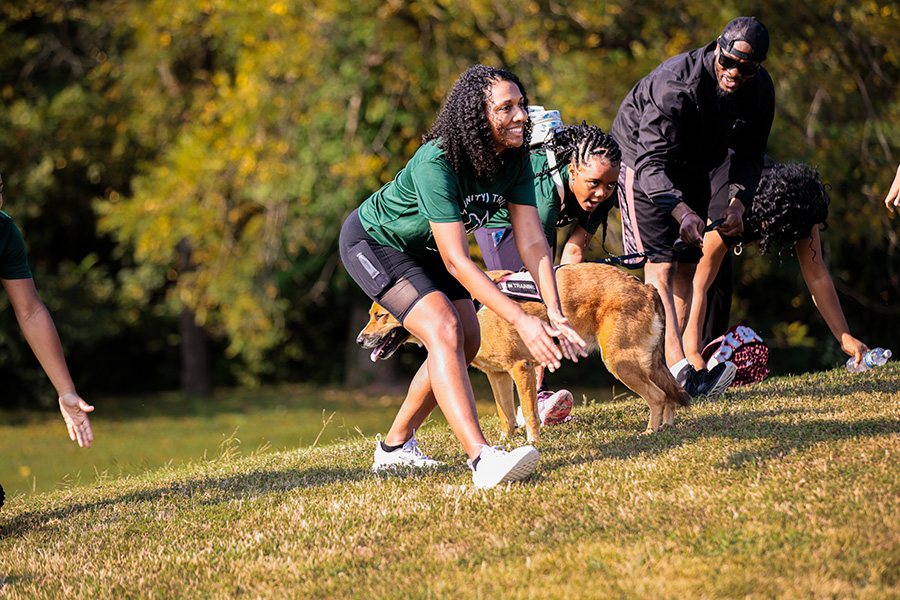
Trails are built for movement. Whether it’s walking, hiking, running, biking—they make it very easy to be active. They allow us the opportunity to take charge of our health, which is really important.
What’s your favorite trail?
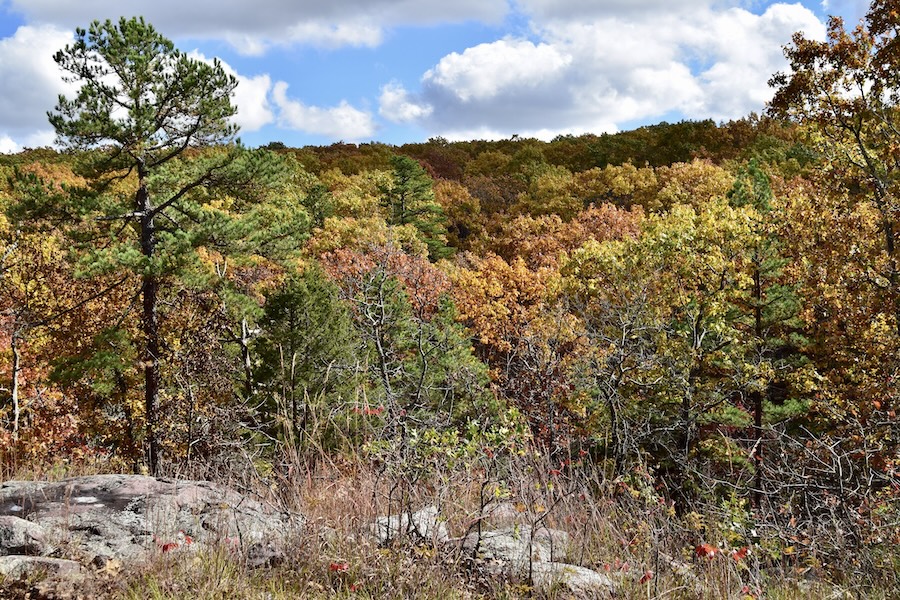
Two hours outside of St. Louis is Taum Sauk Mountain State Park and the Mina Sauk Falls Trail. It’s a 2.5- to 3-mile trail. You’ve got mountains. You’ve got waterfalls. It’s gorgeous, and most people don’t even know it exists in Missouri.

This article was originally developed for the Spring/Summer 2024 issue of Rails to Trails magazine. It has been reposted here in an edited format. Subscribe to read more articles about remarkable rail-trails and trail networks while also supporting our work. Have comments on this article? Email the magazine.
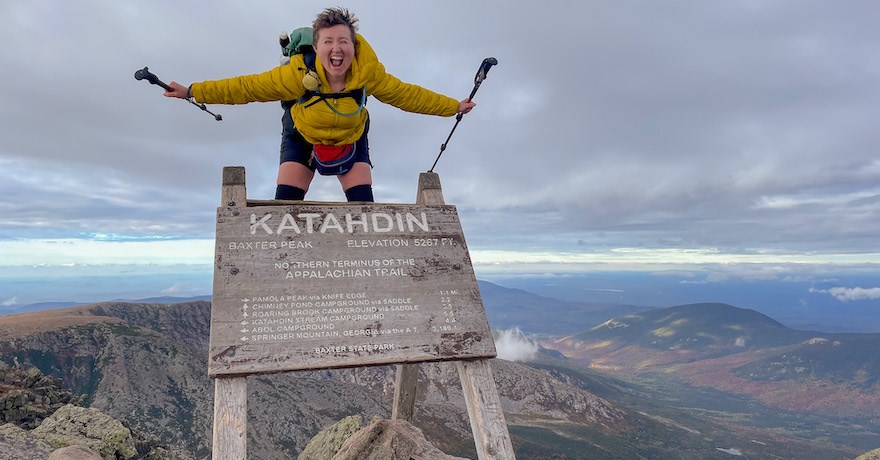

Donate
Everyone deserves access to safe ways to walk, bike, and be active outdoors.
